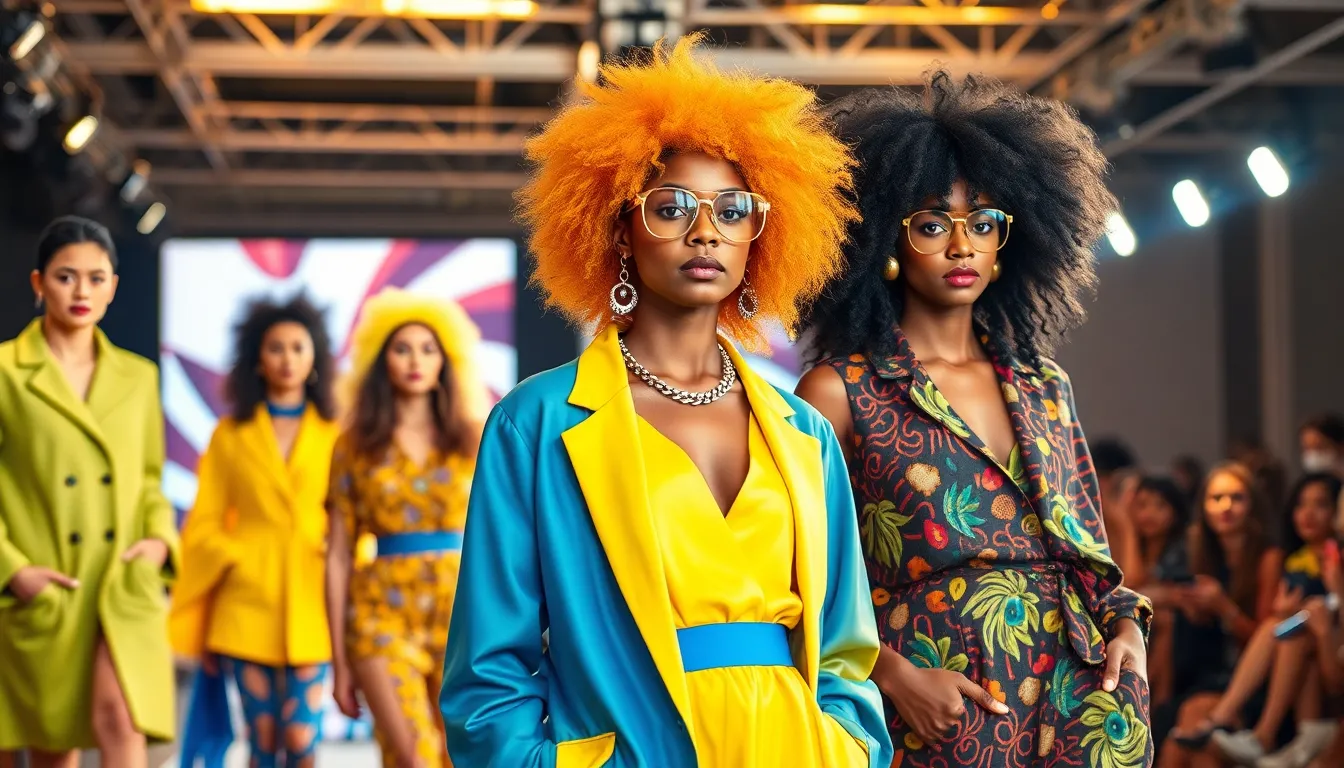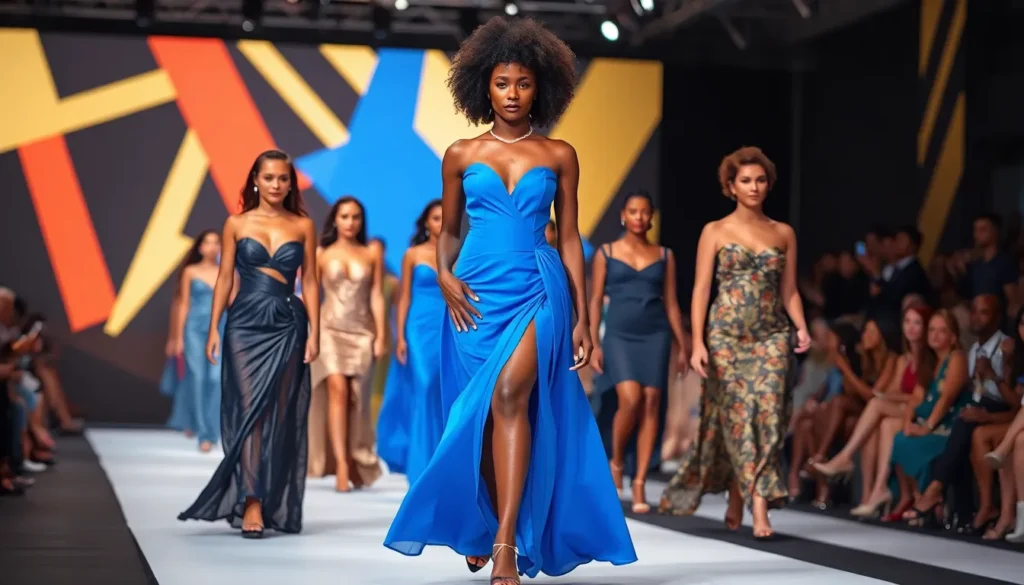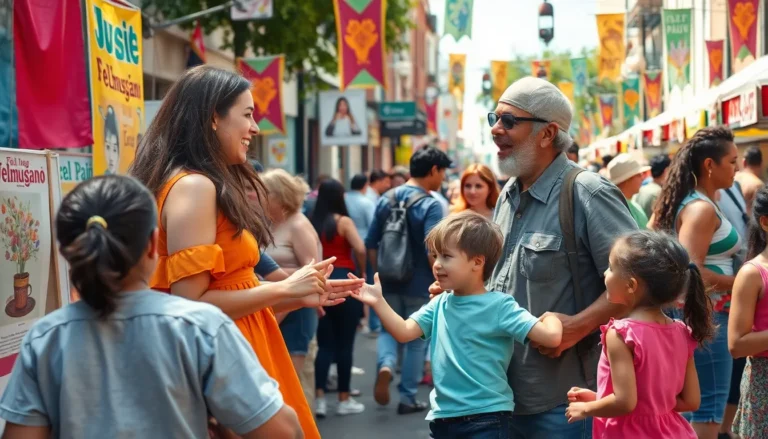Fashion’s heartbeat pulses on the runway, where designers unveil their latest creations and set the stage for upcoming trends. Each season brings a fresh wave of inspiration, showcasing bold colors, innovative fabrics, and daring silhouettes that capture the essence of contemporary style. As the lights dim and models strut, the world watches closely to decipher what will dominate wardrobes in the months ahead.
Runway trends reflect not just the creativity of designers but also the cultural shifts and societal influences that shape our lives. From the resurgence of vintage styles to the embrace of sustainability, these trends reveal what resonates with audiences. Understanding these patterns can empower fashion enthusiasts and industry insiders alike to stay ahead of the curve and make informed choices in their own style journeys.
Table of Contents
ToggleOverview of Runway Trends
Runway trends act as a compass for the fashion industry, offering insight into future styles and innovations. Each season, designers showcase collections that reflect contemporary cultural shifts and evolving consumer preferences.
Historical Context
Runway shows emerged in the early 20th century, with Paris leading the charge as a fashion capital. By the 1940s, the concept of the fashion show solidified, giving designers a platform to present seasonal collections. Over decades, shows evolved from small, intimate presentations into grand spectacles that attract global attention, significantly influencing public perceptions of fashion. Iconic designers like Chanel and Dior shaped these early trends, and their legacies continue to resonate within modern fashion narratives.
Impact on Fashion Industry
Runway trends play a pivotal role in shaping the fashion industry. Retailers rely on runway shows to gauge consumer interests and forecast buying patterns. Successful trends often trickle down to high-street fashion within months, making high fashion more accessible. Additionally, trends spark collaborations among brands, further driving innovation. Sustainability has become a crucial focus, leading to eco-conscious designs that reflect changing consumer values. Consequently, understanding runway trends equips industry professionals and fashion enthusiasts alike to navigate their buying choices effectively.
Current Runway Trends

Runway trends currently reflect a dynamic interplay of colors, fabrics, and textures. Designers are blending traditional elements with progressive ideas, generating fresh visual experiences.
Colors and Patterns
Bold colors dominate the runway this season, with designers favoring vibrant hues like electric blue, sunny yellow, and vivid green. Patterns also take center stage, showcasing geometric designs, florals, and abstract art motifs. The resurgence of retro prints, particularly from the ‘70s and ‘90s, exemplifies a nostalgia-driven approach, drawing inspiration from past eras. Examples of the incorporation of these trends can be seen in collections from renowned fashion houses that embrace eclectic combinations, allowing for personal expression through color and print choices.
Fabrics and Textures
Innovative fabrics are essential to current runway trends, highlighting sustainability and functionality. Natural fibers, such as organic cotton and linen, gain popularity alongside recycled materials and eco-friendly textiles. Textural variety enhances garment appeal, with designers experimenting with layering techniques and 3D elements. Velvet, leather, and knit fabrics frequently appear in contrasting combinations, adding depth and interest to collections. This focus on tactile experiences reflects a growing consumer preference for comfort and functionality without sacrificing style.
Influential Designers and Their Contributions
Runway trends often emerge from the visionary contributions of influential designers who shape the fashion landscape. Their unique approaches to design set the stage for seasonal trends, guiding the industry toward innovative expressions.
Spotlight on Emerging Designers
Emerging designers play a crucial role in redefining fashion norms. They introduce fresh perspectives and challenge traditional silhouettes. Notable examples include Telfar Clemens, who emphasizes inclusivity through gender-neutral designs, and LaQuan Smith, known for his bold, provocative styles. Through creative use of materials and experimental techniques, these designers inject vitality into the industry, appealing to a new generation of consumers who prioritize authenticity and individuality.
| Designer | Key Contributions |
|---|---|
| Telfar Clemens | Gender-neutral designs, inclusivity |
| LaQuan Smith | Bold silhouettes, provocative styles |
| Rodarte | Artistic, innovative interpretations |
Established Designers Leading Trends
Established designers continue to influence runway trends with their expertise and legacy. Brands like Chanel and Gucci remain at the forefront by merging tradition with contemporary aesthetics. Chanel’s latest collection revisits classic motifs with modern twists, while Gucci explores maximalism, featuring eclectic prints and rich textures. These designers set benchmarks that resonate across the fashion spectrum, reinforcing their significant impact on global trends.
| Designer | Recent Trends |
|---|---|
| Chanel | Modern twists on classic motifs |
| Gucci | Maximalism, eclectic prints, rich textures |
| Dior | Elegant silhouettes, sustainable fabrics |
Cultural Influences on Runway Trends
Cultural influences significantly shape runway trends, bridging global perspectives with innovative fashion expressions. Designers draw inspiration from various cultural elements, reflecting societal values and aesthetic preferences.
Global Inspirations
Global inspirations manifest in fashion through diverse cultural practices and traditions. Designers incorporate ethnic prints, traditional craftsmanship, and regional styles into their collections, creating unique statements. For instance, African textiles, Japanese kimonos, and Indian saris appear on runways, promoting a richer cultural narrative. This cross-cultural exchange fosters creativity, highlighting the beauty of diversity in fashion. The infusion of global patterns and techniques results in collections that resonate across different audiences, emphasizing inclusivity.
Social Media’s Role
Social media significantly influences runway trends, transforming how fashion communicates with consumers. Platforms like Instagram and TikTok serve as vital tools for designers, allowing them to share collections instantly. Real-time feedback from followers shapes designers’ decisions, creating a dialogue between creators and consumers. Additionally, fashion influencers and bloggers amplify trends, making them accessible to wider audiences. Viral moments, such as micro-trends driven by social media, directly impact runway presentations, ensuring that designs reflect current cultural conversations. Through this digital interaction, fashion evolves rapidly, adapting to cultural shifts and consumer demands.
Runway trends serve as vital indicators of the fashion industry’s direction. They encapsulate the essence of cultural shifts while showcasing the creativity of both emerging and established designers. The blend of innovative fabrics and bold colors reflects a commitment to sustainability and inclusivity, shaping consumer preferences.
As fashion continues to evolve through social media and global influences, understanding these trends becomes essential for industry professionals and enthusiasts alike. By staying attuned to the latest runway showcases, individuals can make informed choices that resonate with their personal style and values. The dynamic nature of runway trends ensures that fashion remains a vibrant reflection of contemporary society.




